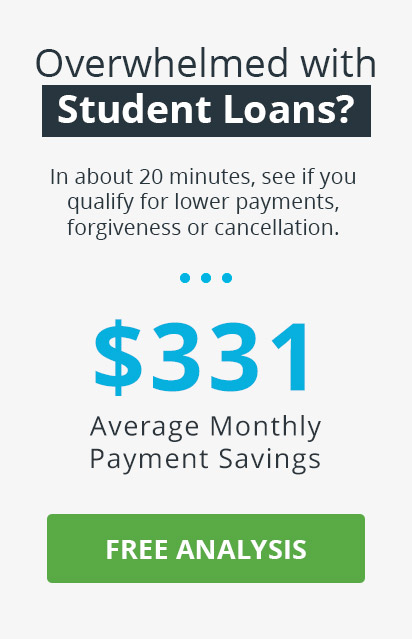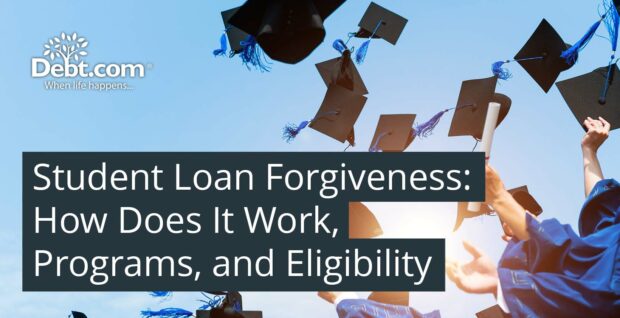
A Graduate PLUS Loan is a federal student loan designed for graduate and professional students to help cover educational expenses not fully addressed by other financial aid. Grad PLUS loan is administered through the federal Direct PLUS Loan program, which offers students the ability to borrow up to the full cost of their education, minus any other financial aid they receive. Students must utilize their eligibility for other federal loans, such as Direct Subsidized and Unsubsidized Loans, before applying for a Graduate PLUS Loan.
The Grad PLUS Loan interest rate is 9.05% for the 2024 to 2025 academic year. A 4.228% origination fee is deducted from the loan amount before disbursement. Repayment begins after the student graduates or drops below half-time enrollment, with an automatic six-month deferment period. Various repayment plans, including income-driven options, are available to accommodate different financial situations.
The process for applying for a Graduate PLUS Loan involves four steps. First, students must complete the Free Application for Federal Student Aid (FAFSA) to determine their eligibility for federal aid. Second, a credit check is conducted after submitting the FAFSA. Students with adverse credit must have an endorser or documentation of extenuating circumstances. Third, students receive a loan offer from their school, including a Student Aid Report and a financial aid award letter. Lastly, students must sign the Master Promissory Note (MPN) and complete any entrance counseling required for the Graduate PLUS Loan.
Understanding the specifics of Grad PLUS Loans, including the fixed Grad PLUS Loan interest rate, how they work, and the application process, is crucial for managing graduate school financing effectively.
Table of Contents
What is a Grad PLUS Loan?
Grad PLUS Loan is a type of federal student aid developed for graduate and professional students. These loans are part of the federal Direct PLUS Loans program and are intended to cover educational expenses not fully met by other financial aid.
The federal direct grad PLUS loan allows eligible students to borrow up to the cost of their education, minus any other financial aid received. Students must first utilize their eligibility for other federal loans, such as Direct Subsidized and Unsubsidized Loans, before applying for a graduate PLUS loan.
Graduate PLUS loans and Parent PLUS Loans are part of the Direct PLUS Loans program. They offer fixed interest rates and various repayment options. Applicants must have a clean credit history and undergo a credit check, though options like obtaining an endorser are available for applicants with credit issues.
The graduate PLUS loan has a high interest rate, currently 9.05% for the 2024 to 2025 academic year, and a 4.228% origination fee deducted from the loan amount before disbursement. Repayment begins after the student drops below half-time enrollment or graduates, with a six-month automatic deferment. Various repayment plans, including income-driven options, are accessible for managing payments based on income and family size.
How does a Graduate PLUS Loan Work?
A Graduate PLUS Loan works by providing financial support to graduate or professional students enrolled at least half-time in a qualifying degree program. Students must submit a Grad PLUS Loan application and the Free Application for Federal Student Aid (FAFSA). A basic credit check is required, but demonstrating financial need is unnecessary.
Students are allowed to borrow up to the full cost of attendance, minus any other financial aid received, with no annual or aggregate loan limits. The loan has a fixed interest rate set annually based on long-term U.S. Treasury rates and includes an origination fee deducted from each disbursement.
Funds are disbursed twice per academic year, once per term. The loan is applied to tuition, fees, housing, and other school charges after the origination fee is deducted. Any remaining funds are given directly to the student for additional educational expenses.
Graduate PLUS Loan repayment starts six months after graduation or when enrollment drops below half-time. Students are permitted to choose from various repayment plans, including income-driven options. Deferment and forbearance options are available if temporary relief is needed.
What is the Importance of Understanding Grad PLUS Loans?
Understanding Grad PLUS Loans is important because they provide financial assistance to graduate and professional students seeking advanced degrees. These federal loans cover tuition, room and board, textbooks, technology, and other eligible educational costs. Graduate PLUS Loans allow students to reduce the financial burden of expensive graduate programs and focus more on their studies.
One significant benefit of Grad PLUS Loans is their higher borrowing limits. These loans allow students to borrow up to the total cost of attendance at their institution minus any other financial aid received. It benefits students in costly programs where expenses exceed the limits of direct unsubsidized loans. Understanding these borrowing limits helps students make informed financial decisions.
Understanding how Grad PLUS Loans impact credit history is crucial. Eligibility requires a clean credit record, free from loan defaults or long-term delinquencies. Students with credit challenges must be aware of these requirements to improve their credit status before applying, which enhances their chances of securing funding.
Knowing the costs and interest rates associated with Grad PLUS Loans is essential. Budgeting effectively and avoiding unnecessary debt is possible when students are aware of costs. Grad PLUS Loans offer various repayment options, including multiple plans and the possibility of deferment or forbearance during financial difficulties. Understanding these options enables students to manage repayments more effectively after graduation, making the financial aspect of their education more manageable.
How does a Grad PLUS Loan differ from other Types of Federal Student Loans?
A Grad PLUS Loan differs from other types of federal student loans through several key features. Grad PLUS Loans are intended for graduate and professional students to fund educational expenses that other forms of financial aid do not fully cover.
One primary distinction is the interest rate. Grad PLUS Loans have a fixed interest rate of 9.05% for the 2024 to 2025 academic year, which is higher than the 6.53% rate for graduate Direct Subsidized Loans but matches the rate for graduate Direct Unsubsidized Loans. It contrasts with the lower rates for undergraduate Direct Subsidized Loans.
Grad PLUS Loans differ in eligibility requirements. Students must be enrolled at least half-time in a graduate or professional program and have no adverse credit history. A credit check is part of the application process for Grad PLUS Loans, unlike Direct Subsidized Loans, which require proof of financial need. Students with poor credit still qualify with a cosigner or by demonstrating extenuating circumstances.
Another significant distinction is the borrowing limit. Grad PLUS Loans have no maximum borrowing amounts, allowing students to borrow up to the full cost of attendance minus any other financial aid received. It differs from Direct Subsidized and Unsubsidized Loans, which have annual and aggregate limits.
Grad PLUS Loans have higher fees. The loan fee is about 4.228%, compared to 1.057% for Direct Unsubsidized Loans. Understanding these fees is important for budgeting.
Repayment options for Grad PLUS Loans include Standard, Graduated, Extended, and Income-Driven Repayment plans. Payments are deferred six months after graduation while the borrower is enrolled at least half-time. The repayment period is extended based on the chosen plan.
Grad PLUS Loans offer similar deferment and forbearance options to other federal student loans, allowing borrowers to suspend or lower payments temporarily. They are eligible for Public Service Loan Forgiveness, with terms potentially extending up to 25 years for graduate programs, and included in income-driven repayment plans.
When should you consider Getting a Grad PLUS Loan?
You should consider getting a Grad PLUS Loan when you have reached the borrowing limits of federal unsubsidized loans for graduate students. First, a Grad PLUS Loan provides additional financial support if the federal unsubsidized loan limit has been reached. It helps cover extra educational expenses beyond these limits.
Second, a Grad PLUS Loan is a good choice if credit history is a concern. It has more flexible credit standards than private student loans, making it available even with less-than-perfect credit.
Third, consider a Grad PLUS Loan to cover the full cost of attendance for the graduate program. These loans are available up to the total cost of attendance minus any other financial aid, helping manage significant education costs.
Fourth, a Grad PLUS Loan is suitable for students who value features like income-driven repayment plans and potential loan forgiveness. These features reduce financial stress and are not typically available with private loans.
Lastly, a Grad PLUS Loan is appropriate for students still in school or unsure about their financial readiness to start repayment. Payments are deferred until six months after graduation, giving students time to secure jobs and stabilize their finances.
What do Graduate PLUS Loans Cover?
Expenses covered by Graduate PLUS loans are listed below.
- Tuition and Fees: These include the cost of courses and any mandatory fees the institution charges.
- Room and Board: Covers costs related to housing and food, whether the student lives on-campus or off-campus.
- Books and Supplies: Includes necessary materials for coursework, such as textbooks, notebooks, lab supplies, and other educational tools.
- Transportation: Covers costs associated with commuting to and from the educational institution, including public transportation, fuel, car maintenance, and parking fees.
- Personal Expenses: Day-to-day living expenses, such as utilities, groceries, and other necessities.
- Loan Fees: Any fees associated with taking out the loan, such as origination fees, are deducted from the loan disbursement.
- Miscellaneous Education-related Expenses: Includes costs for a computer or software required for classes, dependent care, study abroad program costs (if applicable), and other necessary items or services related to the student’s education.
What are the Advantages of Grad PLUS Loans?
The advantages of Grad PLUS Loans are listed below.
- Full Cost of Attendance: A Grad PLUS Loan allows graduate students to borrow up to the full cost of attendance at their school, minus any other financial aid received. It is beneficial for covering the higher costs of graduate education, including tuition, fees, living expenses, and other related costs.
- Access to Federal Benefits: One significant advantage is the access to federal student loan benefits such as income-driven repayment plans, deferment and forbearance options, and potential loan forgiveness programs, including Public Service Loan Forgiveness (PSLF). The loans offer similar benefits to other federal student loans despite their higher interest rates and fees.
- Automatic Deferment During Emergencies: Grad PLUS Loans provide automatic deferment during emergencies. For instance, automatic repayment relief, including interest pauses, was available for these loans during the COVID-19 pandemic.
- Flexibility in Borrowing: Students have the flexibility to borrow up to the full cost of attendance each academic year, making it easier to meet financial needs without being restricted by fixed annual limits. The loan application process is simple, typically taking around 20 minutes.
- Credit Requirements: Grad PLUS Loans has no minimum credit score requirement. Borrowers only need to have a clean credit history, and if they do not meet credit requirements, they still secure a loan with an endorser (co-signer) who agrees to repay the loan if necessary.
What are the Disadvantages of Grad PLUS Loans?
The disadvantages of Grad PLUS Loans are listed below.
- Higher Interest Rates: Grad PLUS Loans typically have higher interest rates than other federal student loans. The fixed interest rate for the 2024-2025 academic year was 9.08%, higher than the federal Direct Unsubsidized Loan rate.
- Origination Fees: These loans come with significant origination fees. Grad PLUS Loans charge a fee of 4.228%, considerably higher than other federal loans. The fee reduces the actual funds available to the borrower.
- Stricter Eligibility Requirements: The eligibility criteria for Grad PLUS Loans include stringent credit requirements. Borrowers must have a good credit history without adverse issues like defaults or long-term delinquencies, which limit access for some potential borrowers.
- Accrual of Interest: Interest on Grad PLUS Loans begins accruing when the funds are disbursed, increasing the overall debt burden. Borrowers are responsible for paying the interest throughout their repayment period unless they choose interest-only payments while in school.
- Difficulty in Loan Forgiveness: Obtaining forgiveness for Grad PLUS Loans is difficult, even with options like Public Service Loan Forgiveness. These loans are not quickly discharged, even in cases of bankruptcy, which result in a long-term financial obligation.
What are the Eligibility Criteria for Grad PLUS Loans?
The eligibility criteria for Grad PLUS Loans are listed below.
- Enrollment Status: Graduate or professional students must be enrolled at least half-time in a program leading to a graduate or professional degree or certificate to meet the grad plus loan requirements.
- Credit History: There must be no adverse credit history on the record, such as bankruptcy, long-term delinquencies, or student loan defaults. A qualified endorser is needed if experiencing difficulty qualifying for the grad plus loan.
- Filling out the FAFSA: Completing the Free Application for Federal Student Aid (FAFSA) is required before applying for a Grad PLUS Loan. It is crucial for meeting the grad plus loan requirements and assessing eligibility for federal aid programs.
- U.S. Citizenship: Must be a U.S. citizen or an eligible non-citizen with a valid Social Security number to fulfill the grad plus loan requirements.
- Satisfactory Academic Progress: Maintaining satisfactory academic progress as defined by the institution is necessary to meet the grad plus loan requirements and progress toward the degree or certificate.
What is the Application Process for Grad PLUS Loans?
The Grad PLUS Loan application process is listed below.
- Complete the FAFSA (Free Application for Federal Student Aid) to apply for Grad PLUS loan. Getting the financial info is crucial for determining aid eligibility. The FAFSA opens in October each year, so complete it immediately.
- Undergo a credit check after submitting the FAFSA. The government reviews the credit history to determine eligibility. Getting an endorser or proving extenuating circumstances is possible if the credit is poor. Borrowers with adverse credit need to complete credit counseling.
- Receive the loan offer once the FAFSA is processed. The school provides a Student Aid Report, a financial aid award letter outlining the graduate PLUS loan amount, and other financial aid. Accept the full amount or a portion of it.
- Sign the Master Promissory Note (MPN) to finalize the acceptance of the Grad PLUS loan. Log into the FAFSA portal to sign the MPN and provide a copy of the driver’s license and contact details for two personal references.
- Complete entrance counseling if required. Understanding the loan terms and conditions is important. Some borrowers qualify for exemptions if they previously received a federal direct unsubsidized or direct PLUS loan.
How is the Loan Amount determined for Grad PLUS Loans?
The loan amount for Grad PLUS Loans is determined by the educational institution’s Total Cost of Attendance (COA). COA represents the projected cost of attending a specific institution and includes expenses such as books and supplies, room and board, tuition, fees, transportation, and other associated costs. The COA helps determine the amount of financial aid a student is qualified for.
The total amount of grants, scholarships, or other loans the student obtained is subtracted from the COA to compute the Grad PLUS Loan amount. The remaining sum, not covered by different forms of financial assistance, is the maximum amount eligible to be borrowed through a Grad PLUS Loan.
For example, the student is allowed to borrow up to $20,000 with a Grad PLUS Loan if the COA is $30,000 and they have $10,000 in scholarships. The process ensures that students cover their educational costs while accounting for other financial aid.
Is Interest Rate for Grad PLUS Loans Fixed?
Yes, the interest rate for Grad PLUS Loans is fixed. It means that the Graduate PLUS loan interest rate remains constant during the loan’s term, allowing borrowers to make predictable monthly payments that do not fluctuate.
The fixed interest rate for Grad PLUS Loans is 9.05% for the 2024–2025 academic year. The federal government establishes the rate annually and varies for future academic years. Prospective borrowers must be aware of student loan interest rates, as they impact the total cost of borrowing.
Eligibility for Grad PLUS Loans requires a credit history and enrollment in a graduate program at least half-time. Borrowers qualify for deferral under specific circumstances and access various repayment options, including income-driven repayment programs. Understanding the implications of a fixed interest rate is crucial for making informed financial decisions about graduate school.
How does Interest Accumulate in Grad PLUS Loans?
Interest in Grad PLUS Loans accumulates from the moment the loan is disbursed. Interest begins to accrue immediately, including during the student’s time in school and the 6-month grace period after leaving school. The accrued interest is added to the principal balance if no interest payments are made. The student pays interest on the new, higher principal balance and previously accumulated interest when repayment starts.
Grad PLUS Loans incur an origination fee deducted from the loan amount before disbursement. The current origination fee is 4.228% of the total loan amount. For example, the fee is $422.80 if a student borrows $10,000, leaving the student with $9,577.20.
What are the Options for Repayment of Grad PLUS Loans?
The options for repayment of Grad PLUS Loans are listed below.
- Income-Driven Repayment Plans: These plans adjust monthly payments based on income and family size, making payments more manageable according to financial circumstances.
- Standard Repayment Plan: The plan involves fixed monthly payments over ten years, providing a predictable and straightforward repayment schedule.
- Graduated Repayment Plan: Payments start lower and increase gradually, usually every two years. The option benefits borrowers who anticipate rising income in the future.
- Extended Repayment Plan: The plan extends the repayment period up to 25 years, resulting in lower monthly payments but potentially higher overall interest costs.
- Deferment: Student loan deferment allows borrowers to temporarily suspend payments while enrolled at least half-time and for six months after leaving school. Interest accrues during deferment, increasing the total loan balance when payments resume.
Can you Consolidate Graduate PLUS Loans?
Yes, you can consolidate Graduate PLUS Loans. Graduate PLUS Loans are consolidated with other federal student loans, simplifying repayment by combining them. It helps manage monthly payments more effectively.
Consolidate Graduate PLUS Loans with Stafford Loans and other federal education loans. It reduces the total monthly payment, as the new loan has a fixed interest rate based on the weighted average of the original loans.
Graduate PLUS Loans are unable to be consolidated with non-educational loans, such as mortgages. Student Loan Consolidation is limited to other federal student loans, so managing a mortgage and student loans needs to be done separately.
Can Grad PLUS Loans be Forgiven?
Yes, Grad PLUS Loans can be forgiven under specific circumstances. Public Service Loan Forgiveness (PSLF) and Income-Driven Repayment (IDR) Plans are two student loan forgiveness programs that offer loan cancellation options.
PSLF allows borrowers working in public service jobs to have their loans forgiven after they make 120 qualifying payments. IDR plans, depending on the plan, forgive remaining balances after 20 or 25 years.
Eligibility requires borrowers to meet specific conditions. PSLF requires that borrowers be employed full-time by a qualifying employer, such as a government agency or non-profit organization. Borrowers must recertify their income annually and remain enrolled in an IDR plan for IDR forgiveness. Loans must be current and not in default.
Forgiven amounts under PSLF are not taxable, but amounts forgiven under IDR plans are considered taxable income. Borrowers must understand the specific conditions and tax implications of these Student Loan Forgiveness programs.
What are the Best Management Tips for Grad PLUS Loans?
The best management tips for Grad PLUS loans are listed below.
- Understand Eligibility Requirements: Ensure that eligibility criteria are met: be a graduate or professional student enrolled at least half-time in an eligible program and have a clean credit history or a qualified endorser.
- Complete the FAFSA: Fill out the Free Application for Federal Student Aid (FAFSA) to determine eligibility for federal financial aid and access Grad PLUS loan options.
- Monitor Interest Accrual: Interest accrues when funds are disbursed. Making interest-only payments during enrollment and the six-month post-graduation period helps reduce the loan balance.
- Know the Disbursement Fees: Grad PLUS loans have an origination fee of 4.228%, deducted from the total loan amount. Budget accordingly to account for the fee.
- Explore Repayment Options: Research and select from various repayment plans, including income-driven options that extend terms from 10 to 25 years, based on income and family size.
- Benefit from Loan Forgiveness Programs: Investigate forgiveness options such as Public Service Loan Forgiveness or Teacher Loan Forgiveness for work in qualifying fields. Track qualifying payments to benefit from potential forgiveness.
- Consider Refinancing Options: Refinancing is an option if financial conditions improve or interest rates decrease. Refinancing federal loans into private loans forfeits federal protections and benefits.
What are Alternatives to Graduate PLUS Loans?
The alternatives to Graduate PLUS loans are listed below.
- Federal Direct Unsubsidized Loans: These loans are available to graduate students without financial need requirements and with lower interest rates than Grad PLUS Loans. However, borrowing limits are insufficient to cover the full cost of attendance.
- Scholarships and Grants: These are free financial aid that does not require repayment, available from universities, private organizations, and government programs. These are merit-based, need-based, or specific to fields of study.
- Employer Tuition Assistance: Employers offer tuition reimbursement or assistance programs that cover part or all of the tuition costs. These programs often require a commitment to work for the employer after graduation.
- Assistantships and Fellowships: Graduate assistantships provide a stipend and tuition waiver in exchange for work at the university. Fellowships offer financial support based on academic achievement or research potential.
- Private Student Loans: These are offered by banks, credit unions, or online lenders, with varying terms and interest rates based on creditworthiness. These generally have higher interest rates and fewer borrower protections than federal loans.
- Savings and Personal Resources: Utilizing personal savings, family contributions, or other resources to pay for graduate school, avoiding loans and interest payments.
- Income Share Agreements (ISAs): These provide funding in exchange for a percentage of future income for a set period, with payments adjusting based on income level.
- State-Specific Programs: State-sponsored loans, grants, or scholarships for graduate school residents, with eligibility and availability varying by state.
- Crowdfunding and Peer-to-Peer Lending: Raising funds through crowdfunding platforms or borrowing from peer-to-peer networks involves higher interest rates or fees.









